Tax policies and stablecoins boost the crypto market, targeting a trillion-dollar market cap.
Author: Arthur Hayes
Translation: Baihua Blockchain
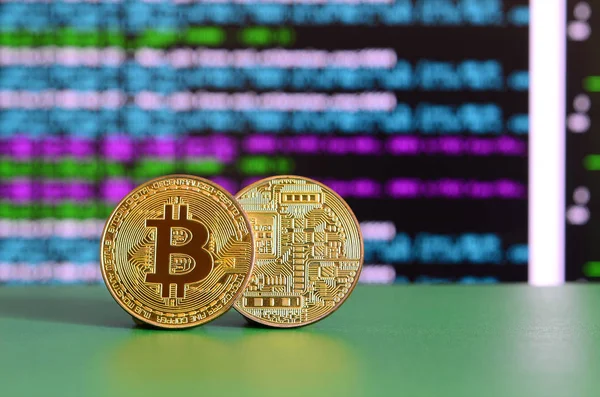
The highest form of praise humans can offer to the universe is the joy derived from dance. Most religions incorporate music and dance into their worship rituals. My "organized religion"—house music—is not about "moving your body" in a church on Sunday morning, but rather in moments similar to those at Club Space.
During college, I celebrated rhythm by joining a ballroom dance club. Each ballroom dance has strict rules (for example, in ballroom rumba, you cannot step on a bent leg), and for beginners, the most challenging part is completing the basic steps in time with the music. A significant part of the difficulty lies in determining the time signature of a song and where each beat falls.
My favorite ballroom dance—the jive—uses a 4/4 time signature, while the waltz is in 3/4. Once you know the time signature, your ears must detect which instrument emphasizes the first beat and count the remaining beats. If every piece of music simply had a bass drum monotonously pounding out "one, two, three, four," it would be incredibly dull. Music is engaging because composers and producers add depth and richness to songs by layering other instruments and sounds. However, when dancing, listening to these secondary sounds is unnecessary for moving your feet at the right time and in the right place.
Like music, price charts are waves of human emotion, and our portfolios dance along with them. Just as in ballroom dancing, our decisions to buy and sell different types of assets must follow the time signature and rhythm of specific markets. If we are out of sync, we will lose money. Losing money is as ugly as a dancer who is out of rhythm. So the question arises: if we want to remain beautiful and prosperous, which instrument in the financial market should our ears be tuned to?
If there is one axiom that supports my investment philosophy, it is that the most important variable in profitable trading is understanding changes in the supply of fiat currency. This is especially crucial for cryptocurrencies, as at least for Bitcoin, it is a fixed-supply asset. Therefore, the rate of expansion of the fiat currency supply determines the pace at which Bitcoin's price rises. Due to the massive creation of fiat currency since early 2009, competing for a relatively small supply of Bitcoin has made it the best-performing asset in human history when priced in fiat currency.
Currently, the noise generated by financial and political events is a tritone. The market continues to rise, but some very serious, seemingly negative catalysts are creating dissonance. Should you hedge against tariffs and/or wars? Or are these just irrelevant instruments? If so, can we hear the guiding force of the bass drum—that is, credit creation?
Tariffs and wars are important because a single instrument or sound can ruin a piece of music. However, these two issues are interconnected and are irrelevant to Bitcoin's continued ascent. U.S. President Trump cannot impose meaningful tariffs on China because China would cut off the supply of rare earths to the American empire and its vassal states. Without rare earths, the U.S. cannot manufacture weapons to sell to Ukrainian President "Slavic Butcher" Zelensky or Israeli Prime Minister "Bedouin Butcher" Netanyahu. Thus, the U.S. and China are engaged in a deadly tango, maintaining enough trade economically and geopolitically to avoid overly destabilizing the situation. This is why the status quo—though tragic and deadly for civilians in both war zones—will not have a substantial impact on global financial markets for the time being.
Meanwhile, the credit bass drum continues to mark time and rhythm. The U.S. needs industrial policy, which is a euphemism for state capitalism, technically referred to as that dirty word: fascism. The U.S. needs to shift from a semi-capitalist economic system to a fascist economic system because its industrial giants cannot spontaneously produce enough war materials required by the current geopolitical environment. The Israel-Iran war lasted only 12 days because Israel exhausted the missiles supplied by the U.S. and could not operate its air defense systems perfectly. Russian President Putin is indifferent to the ongoing threats from the U.S. and NATO to deepen support for Ukraine because they cannot produce weapons in the same quantity, speed, and low cost as Russia.
The U.S. also needs a more fascist economic arrangement to promote employment and corporate profits. From a Keynesian perspective, war is good for the economy. The organic demand from a depressed population is replaced by the government's endless demand for weapons. Ultimately, the banking system is willing to extend credit to businesses because they have profit guarantees from producing the products the government needs. Wartime presidents are initially very popular because everyone seems to become wealthier. If we calculate economic growth in a healthier way, it becomes clear that war is extremely destructive in terms of net worth. But this line of thinking does not win elections; every politician's primary goal is re-election, if not for themselves, then for their party members. Trump is a wartime president, like most of his predecessors, and thus he is placing the U.S. economy in a wartime state. Finding the rhythm becomes easy; we must look for ways to inject credit into the economy.
In my article "Black or White," I explained how government profit guarantees for "key" industries lead to the expansion of bank credit. I call it "poor people's QE4," which creates a fountain of credit. I predict this will be the method by which the Trump team stimulates the U.S. economy, and the deal with MP Materials is our first large-scale real-world case. The first part of this article will elaborate on how this deal expands the dollar credit supply and will serve as a template for the Trump administration's attempts to produce key goods (semiconductors, rare earths, industrial metals, etc.) needed for 21st-century warfare.
War also requires the government to continue borrowing massive amounts of money. Even as the assets of the wealthy rise due to increased credit supply, capital gains tax revenue will increase, and the government will continue to increase the fiscal deficit. Who will buy this debt? Stablecoin issuers.
As the total market cap of cryptocurrencies rises, a portion of it is stored in stablecoins. The vast majority of these stablecoin assets under custody (AUC) are invested in U.S. Treasury bills. Therefore, if the Trump administration can provide a favorable regulatory environment for traditional finance (TradFi) to participate in and invest in cryptocurrencies, its total market cap will skyrocket. Then, the AUC of stablecoins will automatically rise, creating more capacity to purchase Treasury bills. U.S. Treasury Secretary Yellen will continue to issue Treasury bills far exceeding the amount of bonds or notes for stablecoin issuers to purchase.
Let’s dance the credit waltz, and I will guide readers on how to perfectly execute the serpentine steps.
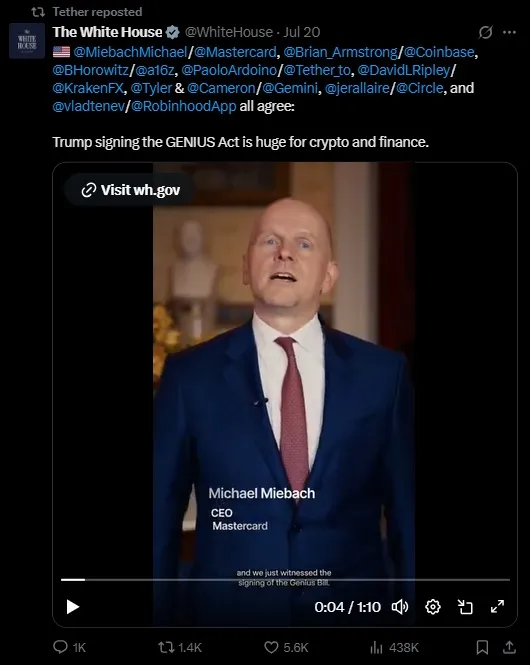
Step One: Poor People's QE4
Central bank money printing cannot create a robust wartime economy. Finance has replaced rocket science. To correct this wartime production failure, the banking system is encouraged to provide credit to industries deemed critical by the government, rather than to corporate raiders.
Private companies in the U.S. aim for profit maximization. Since the 1970s, it has been more advantageous to conduct "knowledge" work domestically and outsource production. The Chinese government is happy to enhance its manufacturing skills by becoming the world's low-cost, gradually high-quality workshop. However, producing a $1 Nike shoe is not a factor that threatens the elite of the American empire. The empire cannot produce war materials when its hegemony is severely threatened. Hence all the fuss about rare earths.
Rare earths are not rare, but due to significant environmental externalities and high capital expenditure requirements, processing them is extremely challenging. More than thirty years ago, Chinese leader Deng Xiaoping decided that China would dominate rare earth production, and this foresight is now being exploited by Xi Jinping. Currently, all modern weapon systems require rare earths; therefore, Xi Jinping decides the duration of the war, not Trump. To correct this situation, Trump borrows from China's economic system to ensure an increase in U.S. rare earth production to continue its belligerent actions.
Here are the key points from Reuters about the MP Materials deal:
- The U.S. Department of Defense will become the largest shareholder of MP Materials.
- This deal will increase U.S. rare earth production and weaken China's dominance.
- The Department of Defense will also set a floor price for critical rare earths.
- The floor price will be twice the current market price in China.
- MP Materials' stock price surged nearly 50% on the news of this deal.
All of this is great, but where does the money to build the plant come from?
JPMorgan and Goldman Sachs supported a $1 billion loan to build a facility ten times the size, MP stated.
Why do banks suddenly want to lend money to the real industry? Because the U.S. government guarantees that this project will be profitable for the borrowers. The T-chart below explains how this deal leads to credit creation from nothing, thereby driving economic growth.

- MP Materials (MP) needs to build a rare earth processing facility and obtains a $1 billion loan from JPMorgan (JPM). The loan creates $1 billion in new fiat currency, deposited into JPMorgan.
- MP then constructs the rare earth processing facility. To do this, it needs to hire workers, i.e., civilians. In this simplified example, I assume all costs are labor. MP must pay the workers' wages, which results in a deduction of $1 billion from MP's account and a credit of $1 billion to the civilians' accounts at JPM.
- The Department of Defense (DoD) needs to pay for these rare earths. The funds are provided by the Treasury, which must issue debt to fund the DoD. JPM converts its MP corporate loan asset into reserves held at the Federal Reserve using the discount window. These reserves are used to purchase the debt, resulting in a credit to the Treasury General Account (TGA). The DoD then purchases rare earths, which becomes MP's revenue, ultimately deposited into JPM.
The final fiat currency balance (EB) is $1 billion higher than JPM's initial loan amount. This expansion is due to the money multiplier effect.
This is how government procurement guarantees finance the construction of new facilities and the hiring of workers through commercial bank credit. I did not include it in this example, but JPM will now lend to civilians to purchase assets and goods (houses, cars, iPhones, etc.) because they have stable, good jobs. This is another example of new credit creation that ultimately ends up in the hands of other U.S. companies, which will redeposit the income into the banking system. As you can see, the money multiplier is greater than 1, and this wartime production leads to increased economic activity, counted as "growth."
The money supply, economic activity, and government debt accumulation are all increasing. Everyone is happy. Civilians have jobs, and financiers/industrialists have government-guaranteed profits. If these fascist economic policies provide benefits for everyone out of thin air, why isn't this the global economic policy for every country? Because it would cause inflation.
The labor and raw material supply needed to produce goods is limited. The government crowds out financing and production of other goods by encouraging the commercial banking system to create money out of thin air. Ultimately, this leads to shortages of raw materials and labor. However, fiat currency is not in short supply. Therefore, wage and commodity inflation will follow, ultimately causing pain for anyone or entity not directly related to the government or banking system. If you don't believe me, read the daily history of the world wars.
The MP Materials deal is the first significant transaction reflecting the Poor People's QE4 policy. The best part of this policy is that it does not require congressional approval. The Department of Defense, under Trump and his 2028 successor, can issue guaranteed procurement orders as part of its normal business operations. Profit-seeking banks will follow suit and fulfill their patriotic duty by providing funding to those businesses reliant on the government. In fact, elected representatives from all parties will rush to argue why companies in their districts should receive procurement orders from the Department of Defense.
If we know that this form of credit creation faces no political opposition, how do we protect our portfolios from the ensuing inflation?
Blowing Bubbles
Politicians are not unaware that accelerating credit growth to stimulate "key" industries will cause inflation. The challenge lies in using excess credit to inflate an asset bubble that does not disrupt society. If wheat prices were to rise like Bitcoin has over the past 15 years, most governments would have already fallen due to popular revolts. Instead, the government encourages those who feel increasingly poorer in real terms to participate in the credit game by profiting from the rise of state-sanctioned inflation-hedging assets.
Let’s look at a real-world example outside of cryptocurrency: China. China is the best example of a fascist economic system. Since the late 1980s, their banking system has created the largest amount of credit in the shortest time, primarily extended to state-owned enterprises. They have successfully become the world's low-cost, high-quality workshop; currently, one-third of manufactured goods are produced in China. If you still think Chinese companies produce inferior products, go test drive a BYD and a Tesla.
China's money supply (M2) has grown by 5000% from 1996 to the present. Civilians hoping to escape this credit-driven inflation face extremely low bank deposit rates. As a result, they flock to buy apartments, a behavior encouraged by the government as part of its urbanization push. Until at least 2020, housing prices continued to rise, helping to suppress the desire of comrades to hoard other physical goods. Housing prices in China's first-tier cities (Beijing, Shanghai, Shenzhen, and Guangzhou) have become the most expensive in the world based on affordability.
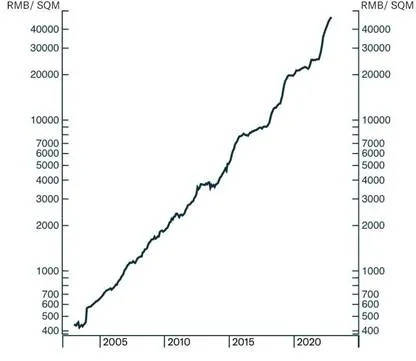
Land prices have increased 80-fold over 19 years, with a compound annual growth rate of 26%.
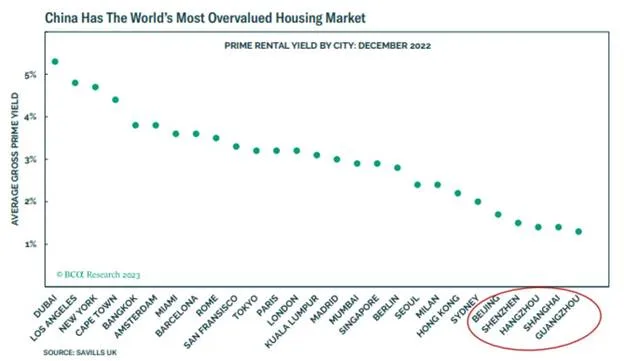
This housing price inflation has not disrupted society because ordinary middle-class comrades can borrow money to purchase at least one apartment. Therefore, everyone is involved. An extremely important second-order effect is that local governments primarily fund social services by selling land to developers, who then build apartments to sell to civilians. As housing prices rise, land prices and sales revenues, as well as tax revenues, increase in sync. This allows the central government in Beijing to reduce its direct tax revenue. Taxes are never popular, and to some extent, the Chinese Communist Party is the ultimate populist government.
Recent examples from China indicate that if the Trump administration seriously implements a fully fascist economic system, the excess credit growth must inflate a bubble that allows ordinary people to profit while providing funding for the government. The bubble that the Trump administration will inflate will center around cryptocurrency. Before delving into how the cryptocurrency bubble can achieve various policy goals of the Trump administration, let me first explain why Bitcoin and cryptocurrencies will soar as the U.S. becomes a fascist economy.
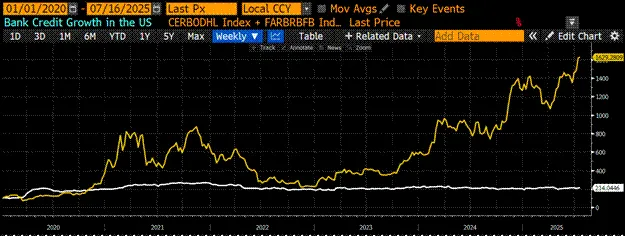
I created a custom index (in white) on Bloomie called the .BANKUS U Index>. This represents the total reserves held by the U.S. Federal Reserve Bank and other deposits and liabilities in the banking system, serving as a proxy for loan growth. Bitcoin is shown in gold, and both lines have been indexed to 100 since January 2020. Credit growth has doubled, while Bitcoin has risen 15 times. The fiat price of Bitcoin is highly leveraged to credit growth. At this point, no retail or institutional investor can deny that if you believe more fiat currency units will be created in the future, Bitcoin is the best investment choice.
Trump and Yellen are also "orange-inspired." From their perspective, the advantage of Bitcoin and cryptocurrencies is that the traditionally non-stock-holding groups (young people, the poor, and non-white individuals) hold a higher proportion of cryptocurrencies than the wealthy white baby boomer generation. Therefore, if cryptocurrencies thrive, it will create a broader and more diverse group satisfied with the ruling party's economic platform. Additionally, to encourage various savings to invest in cryptocurrencies, recent executive orders now explicitly allow 401(k) retirement plans to invest in crypto assets. These plans hold about $8.7 trillion in assets. Boom Shak-A-Laka!
The killer blow is Trump's proposal to eliminate capital gains tax on cryptocurrencies. Trump offers crazy wartime-driven credit growth, regulatory permission for retirement funds to invest in cryptocurrencies, and zero taxes. Hooray!
All of this is great, but there is one problem. The government must issue increasing amounts of debt to fund the procurement guarantees provided to private enterprises by the Department of Defense and other agencies. Who will buy this debt? Cryptocurrency wins again.
Once capital enters the crypto capital markets, it typically does not leave. If investors want to take a break on the sidelines, they can hold stablecoins pegged to the dollar, such as Tether. Tether invests in the safest traditional financial yield instruments—Treasury bills—to earn returns on its AUC. Treasury bills have maturities of less than a year, so interest rate risk is almost zero, and liquidity is comparable to cash. The U.S. government can print unlimited amounts of dollars for free, so it will never nominally default. Current yields on Treasury bills range from 4.25% to 4.50%, depending on maturity. Therefore, the higher the total market cap of cryptocurrencies, the more funds stablecoin issuers accumulate. Ultimately, most of these AUC will be invested in Treasury bills.
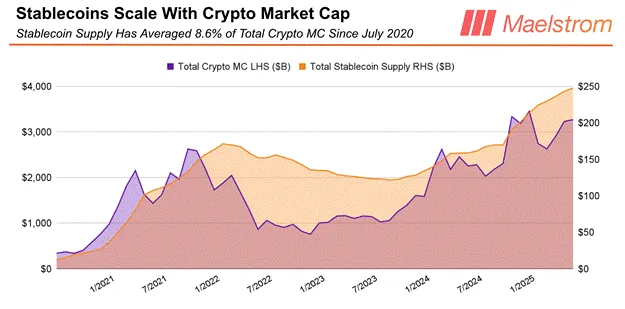
On average, for every $1 increase in the total market cap of cryptocurrencies, $0.09 flows into stablecoins. Assuming Trump fulfills his duties and pushes the total market cap of cryptocurrencies to $100 trillion by the time he leaves office in 2028, this is about 25 times the current level; if you think this is impossible, you haven't been in the cryptocurrency space long enough. This will create about $9 trillion in Treasury bill purchasing power from stablecoin issuers benefiting from global capital inflows.
For historical context, during World War II, when the Federal Reserve and the Treasury needed to fund America's war adventures, they issued Treasury bills far exceeding bonds.
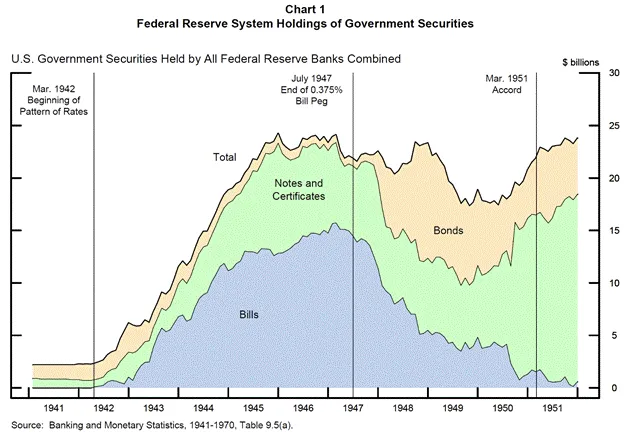
Now Trump and Yellen have solved this problem:
- They replicated China, creating a fascist economic system in the U.S. to produce the wartime materials needed to continue indiscriminately dropping bombs.
- The inflationary impulse of financial assets driven by credit growth points to cryptocurrencies, causing cryptocurrency prices to soar, making the general public feel wealthier due to their astonishing returns. They will vote for the Republican Party in 2026 and 2028… unless they have teenage daughters… or civilians always vote with their wallets.
- The rising cryptocurrency market creates a massive influx of funds for stablecoins pegged to the dollar. These issuers will invest their AUC in newly issued Treasury bills, funding the ever-expanding federal deficit.
The bass drum is thundering. Credit is surging. Why haven’t you fully invested in cryptocurrencies yet? Don’t fear tariffs, wars, or random social issues.
Trading Strategy
It’s simple: Maelstrom is fully invested. Because we are "degens" (radical investors), the junk coin space offers incredible opportunities beyond Bitcoin (the cryptocurrency reserve asset).
The upcoming Ethereum bull market will tear through the market. Since Solana surged from $7 to $280 from the ashes of FTX, Ethereum has been the least popular among large cryptocurrencies. Not anymore; the Western institutional investor class, led by Tom Lee, has fallen in love with Ethereum. Buy first, ask questions later. Or don’t buy, and then sip on a light beer that tastes like urine in the corner while watching a group of people you think are less intelligent burn money buying sparkling water at the table next to you. This is not financial advice; decide for yourself. Maelstrom is doing everything related to Ethereum, everything related to DeFi, and all degenerate investments driven by ERC-20 junk coins.
My year-end targets:
Bitcoin = $250,000
Ethereum = $10,000
Article link: https://www.hellobtc.com/kp/du/07/5983.html
Source: https://substack.com/@cryptohayes/p-168996773
免责声明:本文章仅代表作者个人观点,不代表本平台的立场和观点。本文章仅供信息分享,不构成对任何人的任何投资建议。用户与作者之间的任何争议,与本平台无关。如网页中刊载的文章或图片涉及侵权,请提供相关的权利证明和身份证明发送邮件到support@aicoin.com,本平台相关工作人员将会进行核查。




